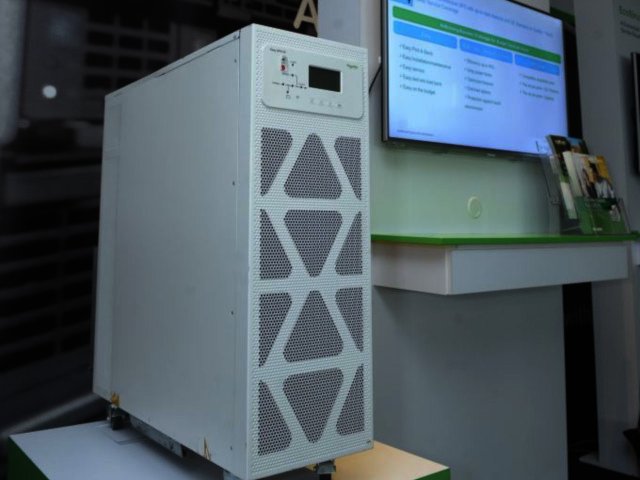Planned or unplanned, load shedding presents a risk to homes and small businesses, as many of these do not have contingency plans for sudden stoppages.
“It is critical that certain aspects of one’s home or business are protected against sudden loss of power or surges, as systems reboot,” explains Riaan de Leeuw, VP for IT Division - Anglophone Africa, Schneider Electric.
“The electronic devices you rely on every day for communication, security and entertainment are at risk for damage and failure because of unexpected blackouts, voltage fluctuations or other power disruptions. Proper backup solutions ensure productivity, comfort and the safety of valuable electronics in the event of a power outage.
Benefits of having a UPS solution to suit your equipment requirements:
- The cost of the UPS is worth every cent when it protects and saves the replacement\repair costs electronic equipment that can run into the 1000s
- UPS’s are scalable according to your needs i.e. enough backup time to safely switch off to multiple hour power backups
- Use the APC UPS selector for the best option based on your individual needs. The tool helps spec the UPS based on your load and run time requirements: https://www.apc.com/za/en/tools/ups_selector/
- Don’t know if this will work: we include the scenario of when there is no power, no Wi-Fi – what do the kids do? – you’ve already painted a picture for business
- Do we want to mention, APC been a household trusted name for power protection solutions since the 80s?
“Small to medium-sized businesses may be most at risk because of their limited ability to generate revenue during downtime and maintain security.
“A key solution is an uninterruptible power supply (UPS), which offers guaranteed power protection for connected electronics. When power is interrupted, or fluctuates outside safe levels, a UPS will instantly provide clean battery backup power and surge protection for plugged-in, sensitive equipment.”
A UPS provides battery backup power and protection for electronic devices, including:
- Wireless networking equipment (routers, modems)
- Computers
- Televisions
- Security systems
- Gaming consoles
- Mobile devices
“In choosing an UPS solution, users should consider that generally, an UPS should have an output watt capacity 20-25% higher than the total power drawn by any attached equipment. In addition, run time is important. Runtime refers to the amount of time a UPS will be able to power its attached equipment in the event of a power disruption. The more equipment you have plugged-in to your UPS, the less runtime you will have, so it is important to make sure your UPS is only providing backup power to your most critical equipment.
“Another important item is Schneider Electric’s Surge Protectors, which protect audio and video electrical equipment from lightning and power surges traveling over COAX and data lines. Its state of the art circuitry offers sensitive electronic equipment excellent protection against large surges and multiple surge events. Additional features such as plentiful outlets, long power cord, phone line splitter, status indicator, cord management and more make this one of our most complete surge offerings
“We encourage customers to consider several factors when selecting backup systems. How many devices do you want to safeguard? How does your family use these devices? Perhaps pairing devices for both your home networking equipment and electronic devices is best for your home, or maybe just using a couple of small UPSs for your home office will suffice.
“Finally, test the equipment you have by unplugging your UPS periodically to make sure all the attached equipment stays powered,” concludes de Leeuw.





